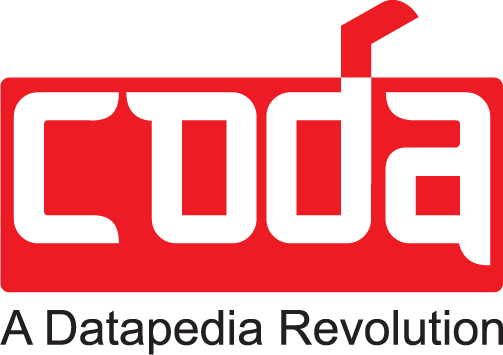In the dynamic industries of Oil & Gas, Utilities, Manufacturing, and beyond, effective data management is pivotal for operational efficiency and cost reduction. Two critical components in this realm are material coding vs data cataloguing. Understanding their distinctions and applications can significantly influence your organization’s data strategy and overall success.
Understanding Material Coding
Material coding is the systematic process of assigning unique identifiers to materials, parts, or products within an organization. These codes facilitate consistent tracking, management, and retrieval of materials across various departments and systems. A well-structured material coding system ensures that each item is easily identifiable, reducing errors and enhancing procurement efficiency.
Key Benefits of Material Coding:
- Standardization: Ensures uniformity in material identification, minimizing discrepancies and miscommunication.
- Inventory Management: Enhances the tracking of stock levels, leading to optimized inventory control and reduced holding costs.
- Procurement Efficiency: Streamlines the purchasing process by providing clear specifications, reducing lead times and procurement errors.
- Cost Reduction: Prevents duplicate purchases and overstocking, leading to significant cost savings.
Data Cataloguing
Data cataloguing involves creating a comprehensive inventory of data assets within an organization. It includes metadata management, data lineage tracking, and establishing relationships between different data entities. In the context of material management, data cataloguing encompasses organizing and maintaining detailed information about materials, including specifications, suppliers, and usage history.
Key Benefits of Data Cataloguing:
- Enhanced Data Discoverability: Facilitates quick and easy access to data assets, improving decision-making processes.
- Improved Data Quality: Ensures accuracy and consistency of data through standardized metadata and regular updates.
- Regulatory Compliance: Assists in adhering to industry standards and regulations by maintaining comprehensive data records.
- Collaboration: Promotes cross-departmental collaboration by providing a unified view of data assets.
Material Coding vs. Data Cataloguing: A Comparative Analysis
While both material coding and data cataloguing aim to enhance data management, they serve different purposes and offer distinct advantages.
| Aspect | Material Coding | Data Cataloguing |
|---|---|---|
| Definition | Assigning unique identifiers to materials for standardized tracking and management. | Creating an organized inventory of data assets with detailed metadata. |
| Primary Focus | Identification and classification of physical materials. | Organization and management of data assets and their metadata. |
| Benefits | Standardization, inventory optimization, procurement efficiency, cost reduction. | Data discoverability, quality improvement, regulatory compliance, enhanced collaboration. |
| Implementation | Involves developing a coding system, training staff, and integrating with existing systems. | Requires creating a metadata repository, establishing data governance policies, and continuous updates. |
| Challenges | Developing a universally accepted coding system, ensuring consistent usage across departments. | Maintaining up-to-date catalogs, managing data from diverse sources, ensuring user adoption. |
Strategic Considerations for Your Business
Determining the right approach between material coding and data cataloguing—or integrating both—depends on your organization’s specific needs, industry requirements, and existing data management practices.
When to Prioritize Material Coding:
- High Volume of Physical Materials: Industries like Manufacturing, Oil & Gas, and Construction, where managing numerous physical items is crucial, benefit significantly from material coding.
- Inventory Challenges: If your organization faces issues like overstocking, stockouts, or misidentification of materials, implementing a robust material coding system can address these problems effectively.
- Procurement Inefficiencies: Inconsistent material descriptions leading to procurement errors indicate the need for standardized material codes.
When to Prioritize Data Cataloguing:
- Data-Driven Decision Making: Organizations aiming to leverage data analytics for strategic decisions require comprehensive data catalogues to ensure data accessibility and reliability.
- Regulatory Compliance: Industries such as Healthcare, Banking, and Defense, which are subject to stringent regulatory standards, benefit from data cataloguing to maintain compliance and audit readiness.
- Complex Data Ecosystems: Businesses with diverse data sources and systems need data cataloguing to create a unified view of their data assets, facilitating better integration and analysis.
Integrating Both Approaches:
For organizations operating in sectors like Oil & Gas, Utilities, and Manufacturing, integrating material coding with data cataloguing offers a holistic data management strategy. This integration ensures that physical materials are accurately tracked and that the associated data is organized and accessible, leading to enhanced operational efficiency and informed decision-making.

Get Expert Guidance on Material Data Management
Looking to optimize your material data strategy? Contact our experts today for a free consultation and discover how the right approach can boost efficiency and reduce costs.
Implementation Best Practices
To effectively implement material coding and data cataloguing, consider the following best practices:
Material Coding:
- Develop a Standardized Coding System: Establish clear guidelines for code structure, length, and format to ensure consistency.
- Engage Stakeholders: Involve relevant departments in the development process to address specific needs and promote acceptance.
- Integrate with ERP Systems: Ensure compatibility with existing Enterprise Resource Planning (ERP) systems to streamline operations.
- Provide Training: Educate staff on the new coding system to ensure accurate implementation and maintenance.
- Regular Audits: Conduct periodic reviews to identify and correct discrepancies, ensuring the system’s integrity.
Data Cataloguing:
- Establish Data Governance Policies: Define roles, responsibilities, and processes for data management to maintain consistency and accountability.
- Utilize Automated Tools: Leverage AI and Machine Learning technologies to automate data cataloguing, reducing manual effort and errors.
- Ensure Scalability: Design the data catalogue to accommodate future data growth and evolving business needs.
- Promote User Adoption: Encourage usage across the organization by demonstrating the catalogue’s value in improving workflows and decision-making.
- Continuous Improvement: Regularly update the catalogue to reflect changes in material specifications, supplier information, and regulatory requirements.
Conclusion
Both material coding and data cataloguing play vital roles in optimizing data management for industries like Oil & Gas, Manufacturing, Utilities, and beyond. While material coding focuses on standardizing and streamlining inventory management, data cataloguing enhances data accessibility and quality.
For businesses in the GCC region (UAE, Saudi Arabia, Qatar, Oman, Kuwait, Bahrain), choosing the right approach or integrating both can significantly impact operational efficiency, cost reduction, and compliance. By implementing best practices and leveraging technology, companies can ensure better decision-making and seamless operations.
FAQs
1. What is the main difference between material coding and data cataloguing?
Material coding assigns unique identifiers to physical materials for standardization and tracking, while data cataloguing organizes and structures data assets, improving data discoverability and quality.
2. Which industries benefit the most from material coding?
Industries with large inventories of physical materials such as Oil & Gas, Manufacturing, Construction, and Marine benefit the most from material coding.
3. How does data cataloguing improve regulatory compliance?
By maintaining structured and accurate metadata, data cataloguing helps businesses meet industry standards, ensure audit readiness, and avoid compliance violations.
4. Can material coding and data cataloguing be integrated?
Yes! Many organizations integrate both approaches to enhance inventory tracking while maintaining a comprehensive digital record of material data.
5. How can I implement a material coding or data cataloguing system?
Start by assessing your current data management challenges, choosing the right tools (such as ERP-integrated solutions), and engaging experts to develop a structured implementation plan.
Take control of your data today! Learn how our solutions can transform your material and data management strategy



